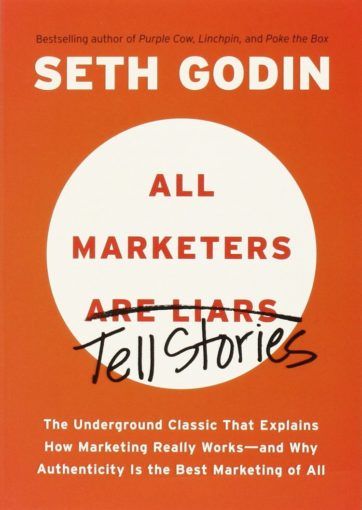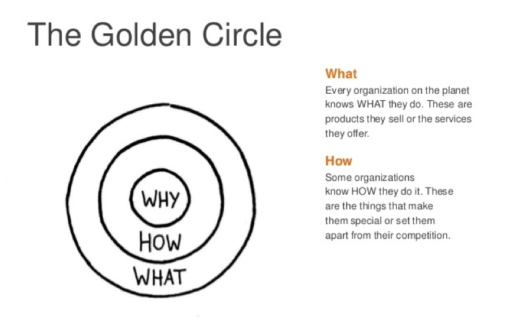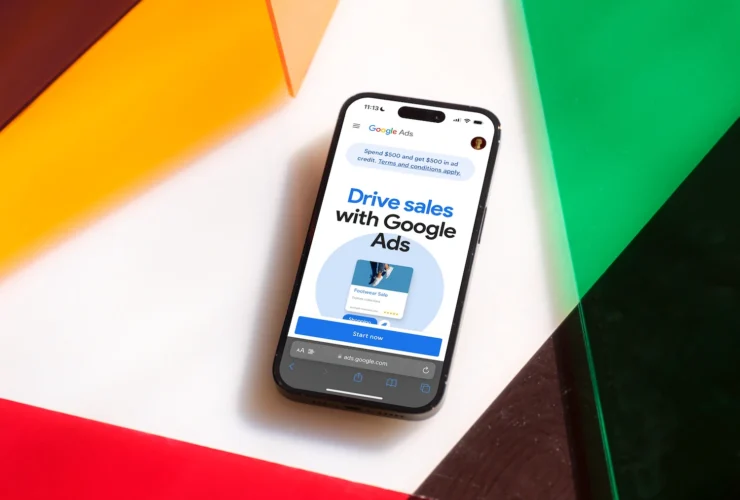Healthcare Marketing Done Right: A Microphone, Not a Megaphone
This is the third of a five-part series, originally published on MillennialEYE.
Ah, marketing: one of the most misunderstood words in the English language. When uttered, it may evoke mental images of used car salesmen, flashy neon lights on the Vegas Strip, or even commercials featuring talkative camels.
But true marketing is so much more than that. Marketing, if done correctly, is a powerful force that can help organizations engage with their customers in meaningful ways. It is about connecting emotionally with consumers—or rather, forming such a deep relationship with them that they cease to be just numbers on a spreadsheet but deeply loyal proponents for your brand.
What Marketing is Not
Before we can understand what good marketing looks like, it is important to first understand what marketing is not. Let’s dispel some rumors. Marketing is not a dirty word. It is not the used car salesman or the incessant TV commercials for mesothelioma settlements. Most people at cocktail parties cringe when they hear that someone works in marketing—and understandably so; we have been conditioned to believe that all marketing is spammy and obtrusive. Nothing could be further from the truth. Good marketing is not harassment—it is relational.
That does not mean we need to limit marketing to telling feel-good, heartwarming stories. However, the stories we do tell must connect with our audience on some level, and that is why all marketing must start with a story.
What Marketing Is

Seth Godin, one of the best-known marketers of our time, sums it up well when he says, “All marketers are storytellers.” All marketing starts with story—not just what you do, but why you exist. As described in Part I of the Building Your Practice Brand series, stories must be authentic, must be consistent, and must explain the why—or the reason you get out of bed in the morning.
Rather than being a megaphone used to yell at everyone who passes by, good marketing is a microphone. Good marketing doesn’t just tell your story; it lends your customers a voice and invites them to share stories of their own and become part of your story by doing so.
First Impressions Matter
First impressions are key because customers make decisions and snap judgments with almost no data, and they generally stick to the conclusions they draw in an instant. It has been said that “You never get a second chance to make a first impression,” and this is perhaps truer in marketing than anywhere else.
Marketers utilize many techniques to establish a good first impression—humor, suspense, and heartwarming stories, to name a few. Regardless of the approach, you must viscerally connect with your audience in an instant.

Authenticity
If a first impression is what gets your audience’s attention and snap judgment, authenticity is what builds brand loyalty. Telling an authentic, coherent story across all touchpoints of your brand is the only way to build trust with your audience.
A key way to build customer trust that many marketers overlook? Doing the right thing. It doesn’t feel like marketing, but it is a hugely important piece of retaining customers and building trust and camaraderie, a topic I will explore later in this series.
When patients complain, address their concerns. When someone leaves a negative review online, pick up the phone to give them an easier outlet to communicate their frustrations. Showing patients that you care about them and want to improve their experiences is just as important as communicating your surgical expertise or optimizing marketing channels. At the end of the day, your patients don’t care how much you know if they don’t know how much you care.
Belief Systems
There are three common ways to position a brand: (1) product attributes, (2) product benefits, and (3) product beliefs and values.

Tesla has become a love mark—a product that evokes delight and inspires loyalty beyond reason. Love marks start with a mission and vision, a belief system about the world. Tesla starts with beliefs. They start with why.
- Product attributes. At the attribute level, there isn’t much room for improvement, as any competitor can copy the attributes of your product. This is for commodities. No one diaper or paper towel can truly provide that much more benefit than the others—they all copy each other and use catchy phrases and cheap tricks (ie, “New and Improved!”) to get customers to open their wallets.
- Product benefits. Product benefits offer a bit more leeway, as they focus on the desired advantage. It is no longer about what the product is but what the product does and what it can do for you. This is where most ophthalmologists stop. It is not just about the fancy femtosecond laser but about the fact that it can help the elderly man see his grandson’s tee-ball games again.
- Product beliefs and values. The deepest and most effective way of positioning a brand is through product beliefs and values. Tesla is the perfect example of this. While some Tesla owners enjoy their cars just as much as the next person, there is a large subset that rave about their cars. They are deeply committed to saving the environment and reducing their carbon footprint. Their custom license plate probably reads “LOLWATT”, “THXELON” or “CYA OPEC.” If you meet one of these proud owners at a cocktail party, trust me—you’ll know.
How Ophthalmology has Gotten Marketing Wrong
Like it or not, most ophthalmologists tend to think marketing is all about optimizing ad spend, tailoring social media platforms, and boosting physician referrals and co-management structures. Although these are important, there is much more to it than that.
When clients forget the most important, strategic aspects that comprise a good marketing plan in favor of the specific tactics, we like to call it marketing myopia. Marketing myopia—or focusing only on the story you want to tell rather than the story the patient needs to hear—must be the first issue addressed if we are to get marketing right.
It is all too easy for ophthalmologists to get so enamored with the latest technology, the best surgical techniques, or tactics to get the most marketing bang for their buck that they forget the true reason they exist and the true selling point of their practices: to improve quality of life by restoring vision. That is why you get out of bed in the morning.
The Anatomy of a Good Marketing Strategy: How You Can Get Marketing Right
To avoid marketing myopia and use smart marketing to your advantage, you must start by reframing your mindset about marketing, and, as we have seen, we must begin with story. A basic marketing plan follows the framework below.
- Begin with an overarching story (this should get at your why)
- Develop a specific message about that story (this describes how you do what you do)
- Analyze the following factors (this is the what):
- Segmentation of your audience
- Differentiation of your product (price, service, or benefits)
- Communication of that message
Free Blog Post Templates
Increase traffic to your site and help kick off your content creation strategy with these free blog post templates.
The four primary ways to segment your audience are by: (1) geography (regions, states, cities), (2) demographics (age, life-cycle stage, gender, income), (3) psychographics (social class, lifestyle choices, personality), and (4) behavior (occasions, benefits, user status, loyalty status).

The five main ways to differentiate your offering include: (1) product differentiation (different features, performance, or style and design), (2) service differentiation (speedy, convenient, or careful delivery),
(3) channel differentiation (the way the channel’s coverage, expertise, and performance), (4) people differentiation (hiring and training better people), and (5) image differentiation (strong and distinctive image that conveys a product’s benefits and positioning).
Let’s say you want to market your LASIK services and engage younger generations in your market. Here is what that might look like:
- Overarching story: “Your vision is a crucial part of your lifestyle—and you deserve better than glasses. We want to help you live the best life possible.”
- Specific message: “With LASIK, we can help you eliminate the need for glasses or contacts and help you live the life you have always dreamed of. It is safe, convenient, and a decision that will benefit you for the rest of your life.”
- Analysis: Your analysis should address the following questions:
- Who is our audience? For LASIK, the audience is myopic millennials who no longer want to deal with glasses or contacts.
- How can we differentiate our product? We are competitive in our pricing compared with other practices in our area, and our practice caters to millennials by offering a modern atmosphere, state-of-the-art technology, and the ultimate ease of use when it comes to the patient experience. At our practice, LASIK should feel as easy as sending a tweet.
- How will we tell that story? This is where the fun of specific marketing tactics comes in. You must tailor and adapt your message to fit your audience’s needs, decide where to tell your story, and through which medium—these tactics can mean the difference between connecting with your audience or completely flopping.
With careful planning and strategic thinking, you can take your most basic business goal (come let us perform your LASIK) and transform it into a meaningful, patient-centric message: “We believe you deserve the best. Your vision is a crucial part of your lifestyle, and you deserve better than glasses. There is something that can help you: it is called LASIK, and, with our professional, compassionate doctors in our state-of-the art facility, the LASIK experience is as easy as tweeting.”
First Things First
There is a time and a place for measuring ad spend, analytics, and growth on social channels—and there is no doubt it is important. But, if we want to get marketing right, that is not the place to start. If you as an ophthalmologist want to get marketing right, forget about restoring vision for a moment and focus on what your patients really want from you.
At the end of the day, the elderly man with the complex white cataract does not truly care about seeing 20/20—he just wants to experience his grandson’s tee-ball game. The recent retiree who has had problems with depth perception does not care about your femtosecond laser—she wants to know that she will be able to compete in triathlons again.
Myopic marketing says, “Let’s focus on promoting our new state-of-the-art surgery center.” Authentic marketing says, “Let’s make sure our patients know that they are in good hands.”
So, what do your patients believe about themselves? And what do you believe about your patients and your ability to help them? Strive to give your patients a microphone to voice their fears, hopes, and desires, and you will never consider marketing a dirty word again; in turn, your patients will not even realize they are being marketed to.
Author’s Note: In the next issue, we’ll take marketing a step further and discuss search engine optimization (SEO). WE’ll cover what SEO is, what it’s not, and how to best use SEO strategies and best practices to benefit your practice.








